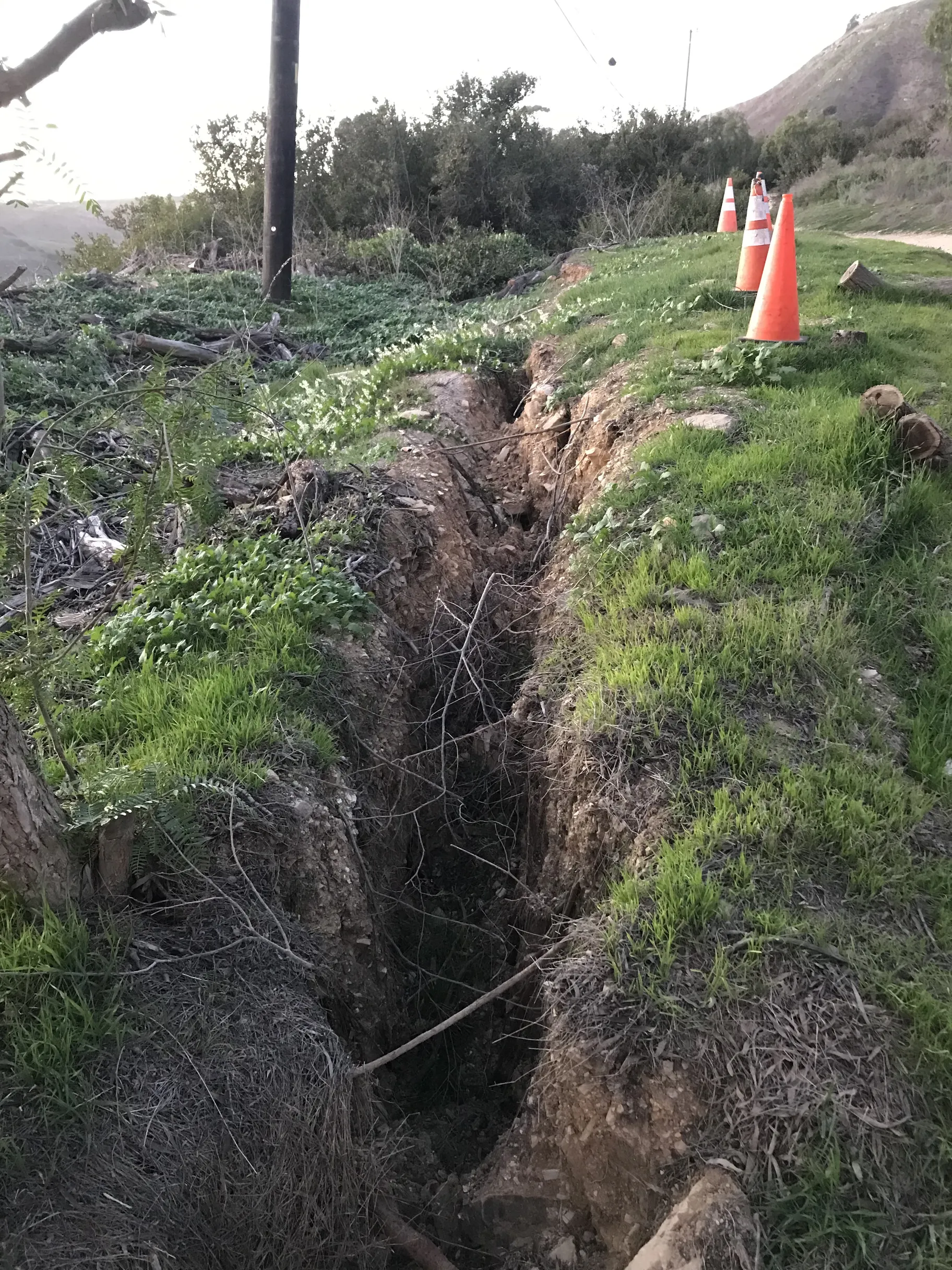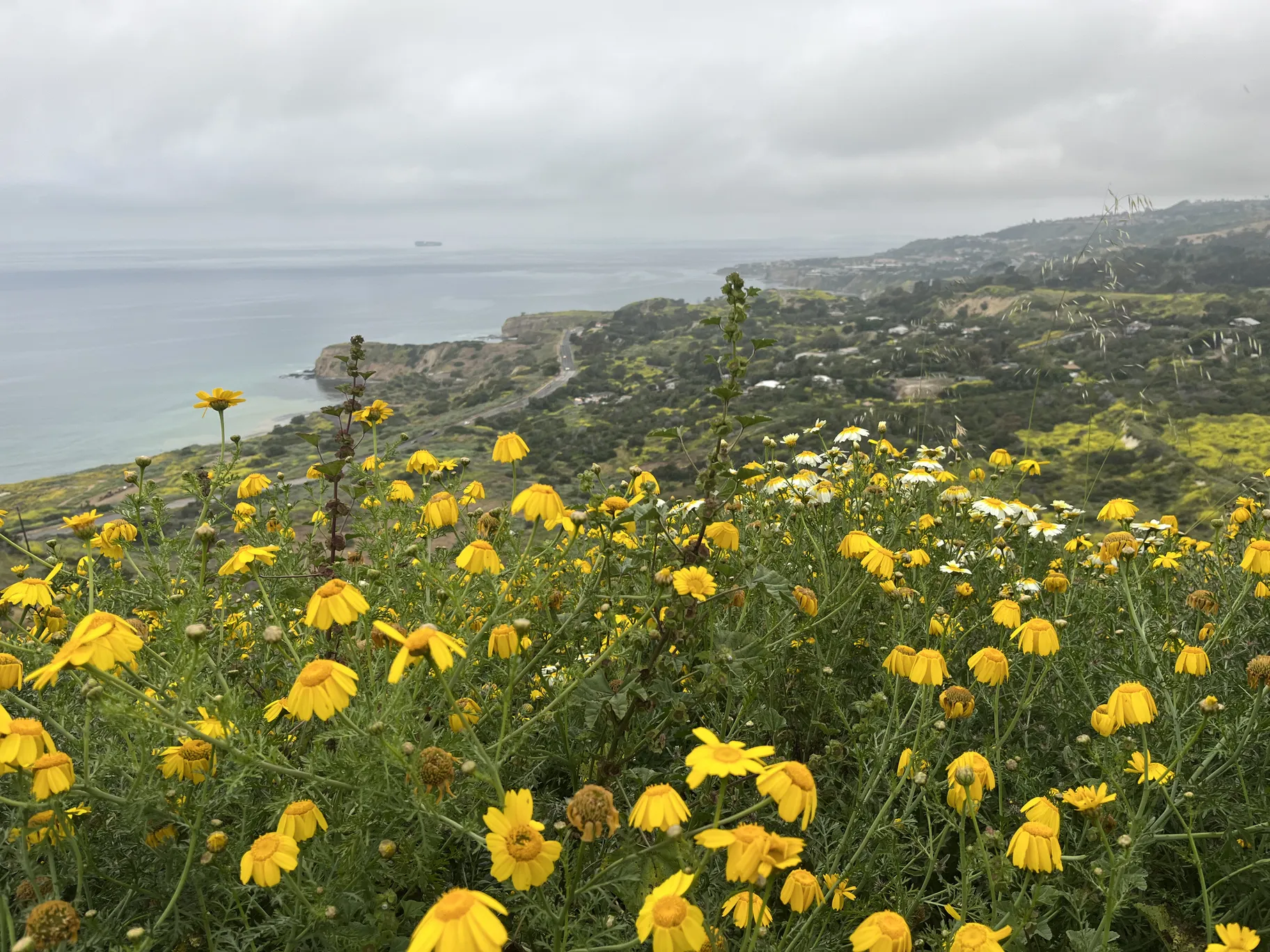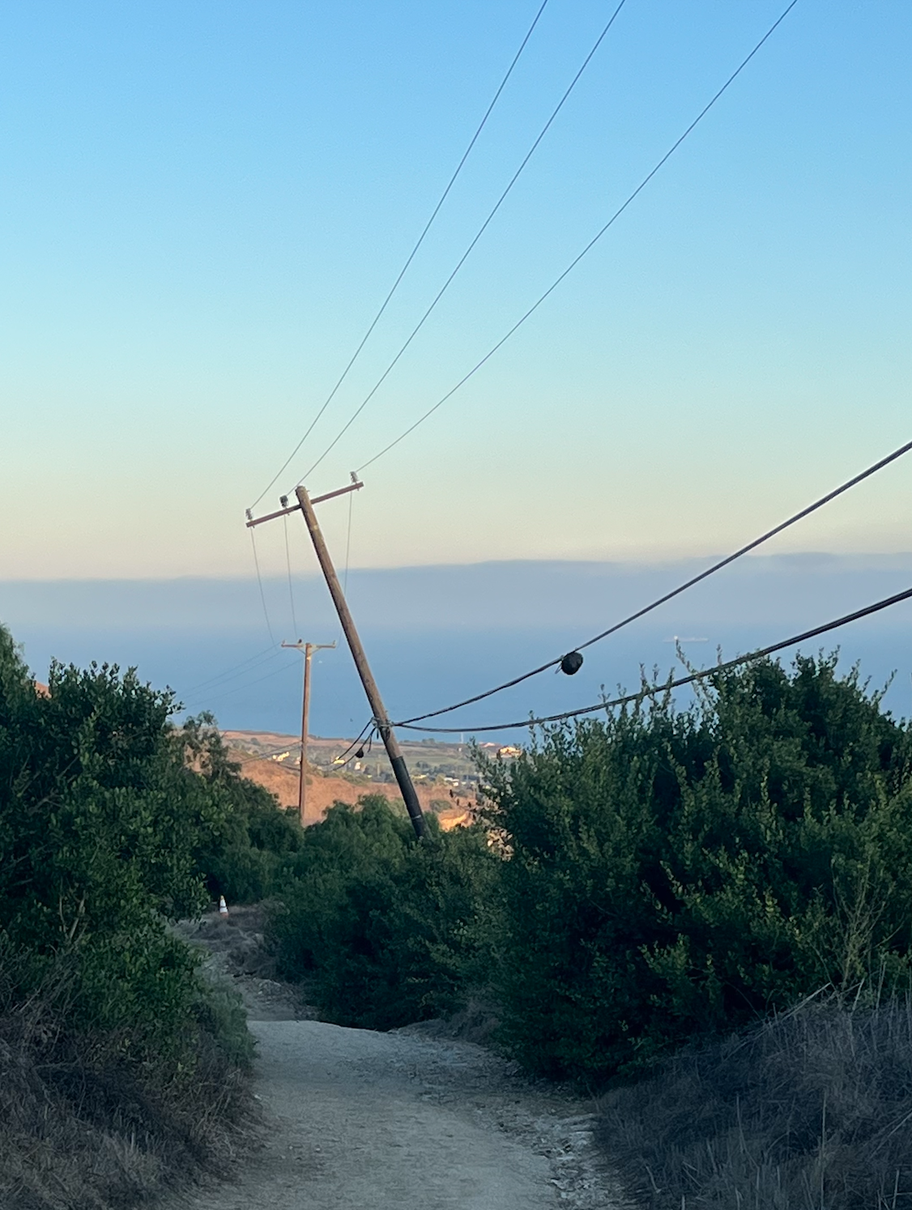A slow-motion landslide that’s damaged homes and led to the closure of more than half the hiking trails in Portuguese Bend Reserve, the large and popular recreation area on the Palos Verdes Peninsula, shows no signs of stopping.
In fact, after creeping quietly along during the many recent years of drought, the land movement sped up after last winter’s heavy rains.
Forecasters predict another wet winter ahead, fueled by El Niño, and the city of Rancho Palos Verdes is already working on contingency plans.
Can you stop a slow-moving landslide? In short, Mike Phipps, a geologist hired by Rancho Palos Verdes, says no. But the city and a group of stakeholders are working on long-term plans to try to at least slow the sliding.
In October, the city declared an emergency and enacted a building moratorium within the ancient landslide complex, which includes the Seaview neighborhood and homes beneath the Portuguese Bend Reserve. They have asked residents around the area to cut back on landscape watering. In August, FEMA approved a $23.33 million grant to the city to help with long-term remediation.
Crews are working to put dirt into fissures and seal them to prevent rainwater from filling them. Officials are considering other long-term measures to try to both prevent water from seeping into the slide and extract water from underground, such as pumping wells or lining canyons with tarps. But it is not clear what will work and they’d still need to be funded. So that could be years off.

Even in February of 2022, the land in the Portuguese Bend Reserve showed signs of movement, but all that started to accelerate and expand within the ancient landslide area after last winter’s heavy rains. Photo by Susan Valot.
The Ancient Altamira Landslide Complex, which dates back about a quarter million years, is one of the largest, fastest-moving landslides in North America – especially now.
“In the last several months, if you annualized the movement, in certain areas, it’s about six to eight feet a year,” says Rancho Palos Verdes City Manager Ara Mihranian.
“This movement is probably the biggest I’ve seen in the last 10 years,” says Bill Lavoie, who has been hiking Portuguese Bend even before it became a reserve in 2005. “I’ve seen little cracks, but I’ve never seen anything that was a foot wide and you can look way down.”
Lavoie leads groups of Sierra Club hikers through the area.
“It’s a wonderful place to hike,” says long-time hiker Steve LeCates. “You go out there in the spring and it’s just this sea of yellow, the mustard plants that come out and … different colors pop up. It’s really a really special place.”

During the spring, the reserves in Rancho Palos Verdes are filled with yellow wildflowers. This is the view from the top of the Portuguese Bend Reserve in April 2023, looking down toward Abalone Cove. Photo by Susan Valot.
The hikers have had to change their routes to avoid the landslide closures. Where you can really see evidence of movement is in the neighborhood below, where some homes are on unconventional foundations, such as wooden pallets, so they can more easily creep with the land.
The sliding in the Portuguese Bend area does not seem to be related to several homes in nearby Rolling Hills Estates crumbling into a canyon a few months ago, but they share a cause: both slides are driven by water.
Below the surface of the peninsula lies a layer of bentonite clay. When it rains or when people water yards or when below-ground pipes burst, water sinks into a clay layer below the surface. That triggers the land on top of the clay to slide like it’s on ball bearings or a slip-n-slide.
The ancient landslide was reawakened in 1956. At the time, Los Angeles County crews trying to extend Crenshaw Boulevard to meet Palos Verdes Drive South dumped dirt on top of the ancient slide complex and it began to move again.
Some homes in the Portuguese Bend area have traveled 400 to 500 feet since then – longer than the length of a football field.
“There’s a guy who’s got a house down here near the pony club and his house literally traveled across the road, onto city property,” Lavoie says.
That has created a quandary of how to assess taxes and land ownership. At a recent city council meeting, one resident described herself as “stuck” because nobody would buy property in her neighborhood and ethically, she and her neighbors cannot sell their houses.
Two homes in the neighboring Seaview neighborhood have been red-tagged because of the slumping land. Others show signs of movement.
The landslide has caused other problems for homeowners.
A geology report prepared for the city recommended that fire trucks no longer use Burma Road, the fire road through the reserve, because it might not hold the weight of such vehicles. The slippage is visible from Burma Road in the angle of a power pole leaning 35 to 40 degrees as it slowly slides down the hill. Electricity reportedly has been turned off to that line.

A power pole leans at a 35 to 40 degree angle along Burma Road in the Portuguese Bend Reserve in August 2023. In 2022, the pole was only slightly tilted. Photo by Susan Valot.
Another moving part of the ancient landslide complex has forced the Lloyd Wright-designed Wayfarer’s Chapel to limit availability of the famous glass chapel to only private events and services.
In the meantime, for some nature fans, it’s been amazing to watch a geological process in slow motion, right before your eyes.
“When you walk the same trail week after week or year after year, you get used to a certain grade and then all of a sudden, there’s a big dip, and you’re like, ‘Oh, wow, this is interesting,’” LeCates says. “I found it kind of fascinating because … the place is alive, it’s moving.”
Mihranian says it could be months or years until the trails reopen. Until then, the hikers maneuver their way around the closures as homeowners hope the hillside holds through the coming rains.
